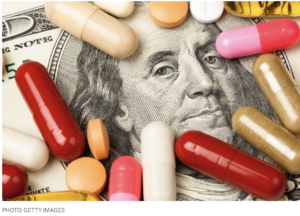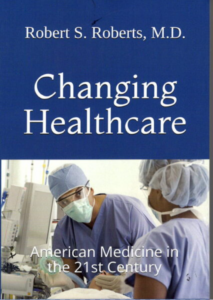
If you watch television much, like most people, you’ve probably seen the latest ads about the “Biden Pill Penalty.” The ads are calling on Republicans and President Trump to fix the penalty. But what is it?
This all concerns the Inflation Reduction Act (IRA) of 2022, a misnamed bill if there ever was one. It certainly did not reduce inflation, but it did do a lot of harm for seniors on Medicare.
The issue is price controls. I wrote about it in a previous post on 8/19/24 called Price Controls Means Fewer Drugs and Groceries. Here’s what I said about them then:
“It makes good political sense to tell seniors you’re going to lower the price of their prescription drugs. What you won’t tell them, however, is this same move will reduce the development of new medicines.”
The editors of The Wall Street Journal said this: “The IRA let Medicare “negotiate” prices for 10 to 20 drugs a year and a total of 60 by 2029. Negotiate is a euphemism for extortion: Drug makers that don’t participate or reject the government’s price face a daily excise tax that starts at 186% and climbs to 1,900% of a drug’s daily revenue.”
The law also requires manufacturers to pay the government rebates on medicines sold to Medicare if they raise prices more than the rate of inflation, and puts them on the hook for more of the entitlement’s Part D costs. Democrats used the resulting estimated “savings” of some $160 billion to pay for the green new deal.
WSJ says, “But subsidized solar panels won’t help if you get sick. The inevitable, albeit invisible, result of Democrats’ raid on pharmaceutical companies will be fewer new medicines.”
Thus, the term, “The Biden Pill Penalty.” The penalty is fewer new medicines for seniors whose declining health means they need those new medicines more than anyone.
Roche CEO Thomas Schinecker said last summer that “we have decided that we are not going to do certain trials, or that we are not going to do a merger or acquisition or licensing [deal] because it is becoming financially not viable.” Astra-Zeneca also warned that it might delay launching some cancer medicines because of the IRA.
Some 90% of drug candidates fail in clinical trials, and manufacturers sometimes never recoup their investment on even those that are approved. They use profits from their few commercial successes to finance research and development into new medicines and to compensate investors. The IRA threatens this risk-reward model.
Here is what the WSJ editors have to say about that:
“Fixing prices is a recipe for shortages, as controls would discourage grocery suppliers. Voilà, empty store shelves. Price controls have led to shortages everywhere they’ve been tried, from Moscow to Caracas. The last American President to impose wage and price controls was Richard Nixon in the early 1970s. He had to stage a humiliating retreat amid shortages and market dislocations, and prices immediately soared when controls were lifted.”
It’s time to undo the damage of the Biden Pill Penalty and get rid of price controls on prescription drugs. We need all the innovation possible to develop new drugs to keep us all living longer. Price controls only disincentivize the pharmaceutical companies from developing new drugs when we need them most.


